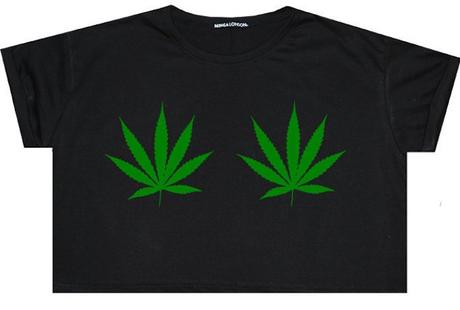
The counterculture ofthe 1960s happened at a time where traditional values were being challenged or rejected.Many people wanted to break away from the mainstream and be different. To express their discontent, theycreated their own fashion style.
Here's a partial list of what was in vogueat that time. You can recognize a lot of them since these items are still worn on the streets today.
Cannabis Culture Apparel
Along with psychedelic tie-dye shirts, cannabis clothing has long been connected to the alternative movement of the hippie subculture. They believe that using hemp heals the body and elevates one's level of consciousness. This idea paved the way for recognizing the plant's medicinal propertiesin the late 1960s.
Peace Symbol
Most people think that the peace sign, like cannabis apparel, started with the hippies. Its origincan be traced back before their movement began. In 1958, British artist Gerald Holtom created the emblem as a protest against nuclear testing. It was painted on demonstrators' signs and banners as they marched to Aldermaston, a small village in the west of London.
Its impact was so huge that it was carried over to the 1960s where it served as the symbol of peace for several subcultures, including the hippie movement. The emblem was printed on many clothing and accessories. Today, you can still find shirts, earrings, and pendants that bear the popular signaround the world.
The high-neck footwear was initially sold in the 1960s to UK workersand quickly became an icon of the mosh pit and fashion runways. The brand was popularized by the rock bands The Who and Sex Pistols, who rejected the mainstream culture through their music. Today, the brand still represents movements like punk, goth, and grunge, among others.
What started as functional desert boots for British soldiers became a rock n' roll staple. These thick-soled crepe shoes were popularized by the teddy boys, men who belonged to a subculturestrongly associated with the music genre and Edwardian fashion. One of the most popular bands to wear creepers were The Beatles, whose music and fashion sense countered the social norms of their era.
Clothing Patches
For the longest time, embroidery has been used to decorate or mend clothing. As the 60sbegan, the craft became a symbol of social movement. People from various subcultures started sewing and pinning patches onto their bags and jackets to express their identity, personality, and solidarity. Those with psychedelic colors were often associated with the hippies, while those with grunge designs identified with rockers.
It's fun to know that the patches on your bag orthe sold online carryprofound meanings. They've come a long way from their humble beginnings to becoming images of individuality.

